
Back in 2009 it seemed there were fewer electric outboards available than fingers on one hand. Jump forward to 2023 and you might have to watch your step, for falling over them on every corner of boat show stands. The following are the key specification factors to look out for when making your choice:
Motor (kW) Manufacturers will also give you a horsepower (hp) equivalent to help. Motor ratings start at approximately 1kW (1.5hp) and head upwards. Manufacturers websites give information as to which size kW motor you'll require for your boat. Note the continuous rating (kW) to ensure the electric outboard will run all day if battery capacity allows. Peak motor (kW) ratings usually allow for a short sprint burst only. Battery capacity (Ah/kWh) The electric propulsion revolution is fuelled by the battery revolution, which means the benefits of modern batteries give us range and speed. Capacity is also directly related to cost. Consider the battery location. Smaller outboards tend to have their batteries integrated and removable, while larger outboards allow connection to a remote battery bank that would be installed in a suitable location on the boat.
Integrated usually means you have the option to remove it, allowing you to carry it separately back home for charging just as you would with a jerrycan. Remotely installed means batteries mounted in a locker or secured to the floor. Remote installation equals greater options for capacity, that means you can go longer and/or faster for longer.
The best choice is for a system approach using the manufacturer's own batteries resulting in a slick installation.
Sourcing your own batteries (third party) doesn't always pay off, but certainly can mean lower initial investment.
Voltage (V) Options start at 12V and run up to 48V. Expect outboards greater than 20kW to have higher voltages.
Bu hikaye Practical Boat Owner dergisinin July 2023 sayısından alınmıştır.
Start your 7-day Magzter GOLD free trial to access thousands of curated premium stories, and 9,000+ magazines and newspapers.
Already a subscriber ? Giriş Yap
Bu hikaye Practical Boat Owner dergisinin July 2023 sayısından alınmıştır.
Start your 7-day Magzter GOLD free trial to access thousands of curated premium stories, and 9,000+ magazines and newspapers.
Already a subscriber? Giriş Yap

Orca sink yacht in Strait of Gibraltar
Spain's maritime rescue service, Salvamento Maritimo, has reported that a 15m (49ft) yacht sank in Moroccan waters in the Strait of Gibraltar following interaction with a pod of orca.

No kill cord or lifejackets were worn during fatal powerboat crash
A kill cord and lifejacket are useless unless worn-that's the warning from the Marine Accident Investigation Branch (MAIB), following its investigation into a powerboat crash that killed a 32-year-old woman and five-year-old girl on 2 October 2022.

Multihull sail work
Brush up on multihull sailing skills before heading off on charter with Gavin Le Sueur's guide to spinnaker handling, tacking and gybing

Five top causes of engine failure and how to prevent them
Jake Kavanagh talks to Sea Start marine engineer Nick Eales about how to avoid the five major causes of an engine breakdown at sea
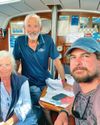
Sail the Atlantic with strangers
Would you sail across the Atlantic with someone you've just met? Ali Wood meets the cruising crews who've done just that

IZIBoat: simple sailing
Rupert Holmes sails an innovative catamaran design intended to widen participation in sailing among those with little time to get on the water in more conventional craft
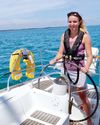
30 WAYS TO GET AFLOAT
From tall ships to small dinghies, you needn't own a boat to sail. Ali Wood looks at the options, and how skippers can also find crew
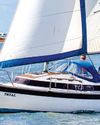
Boats for restoring under £20,000
Duncan Kent picks the best sub-35ft sail and power boats to look for when aiming to undertake a restoration on a budget
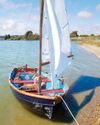
Seaworthy dinghies for less than £500
For low cost traditionally-styled GRP trailer-sailers, consider the Foreland and the Otter available at bargain basement prices
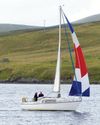
Playing with coloured sails
Maintaining an hourglass-shaped balloon and ratcheting up the log numbers